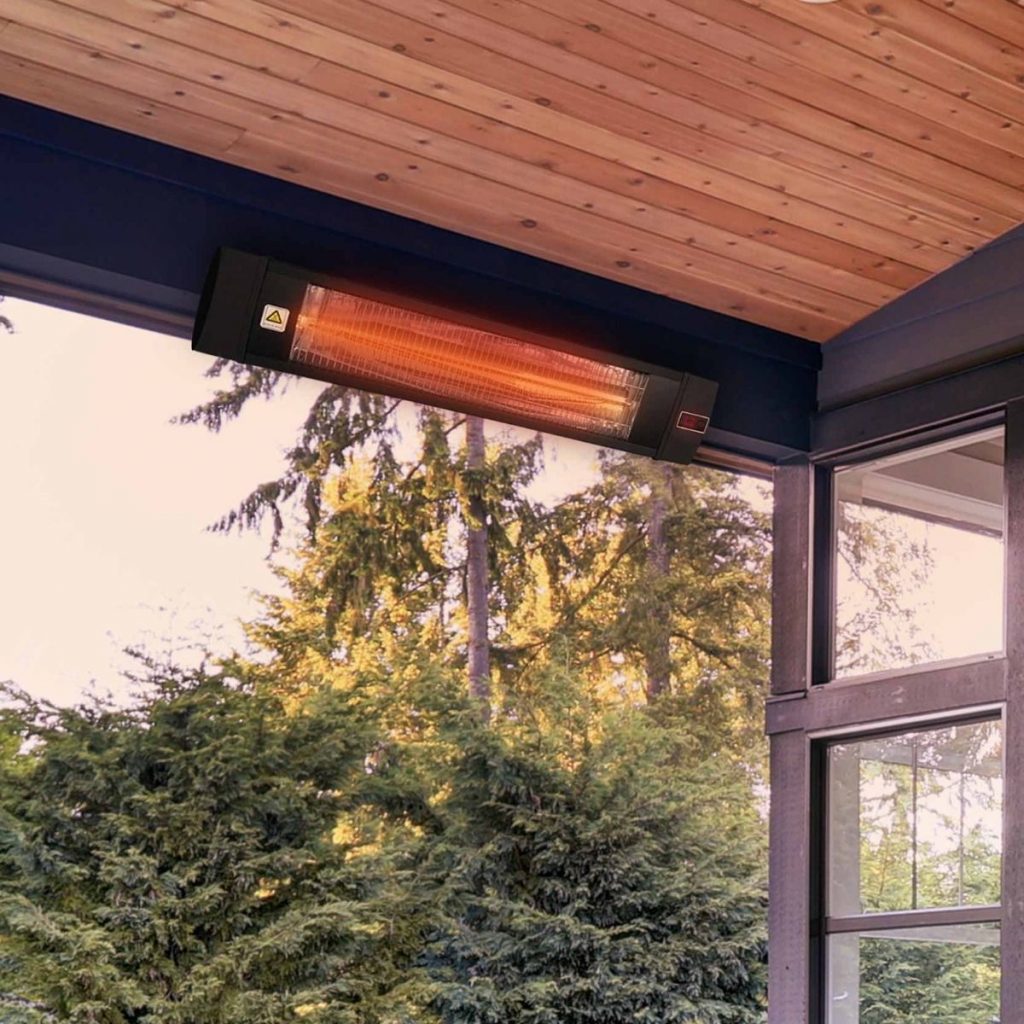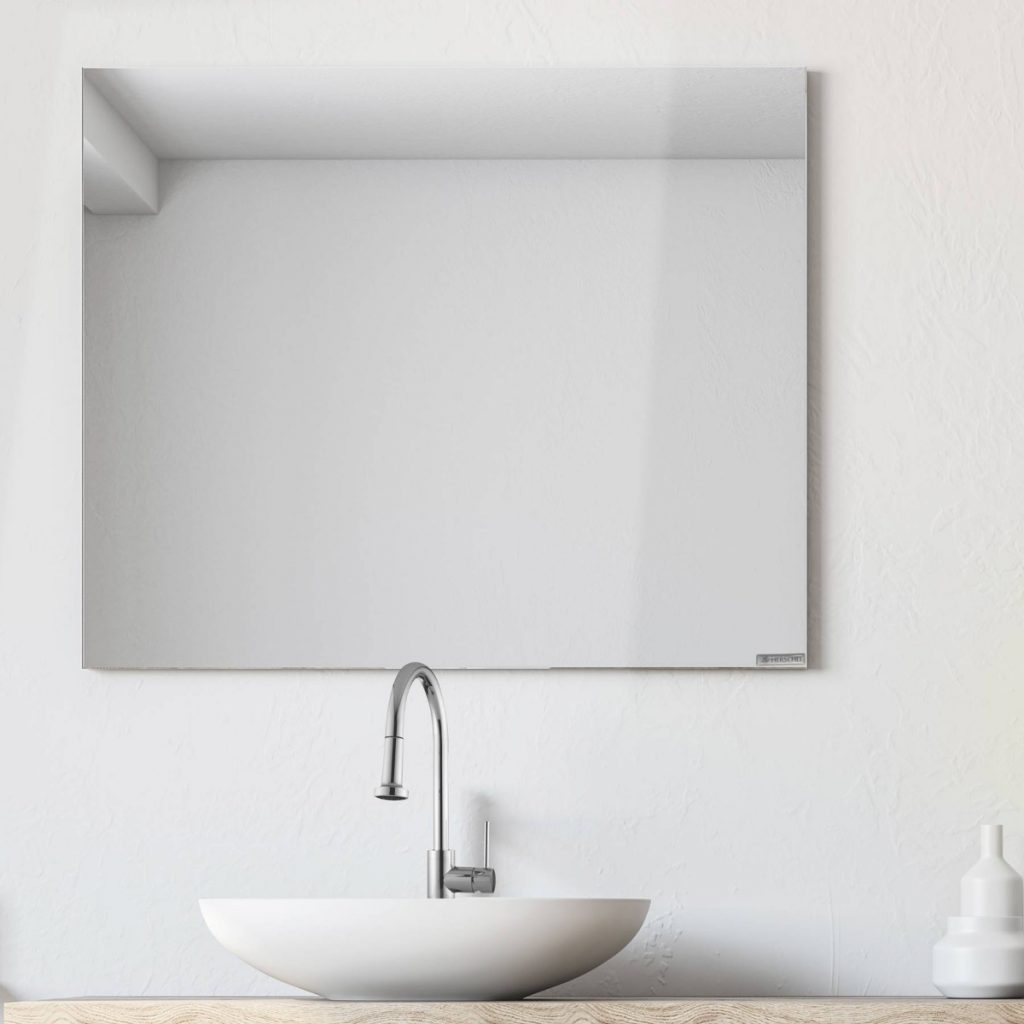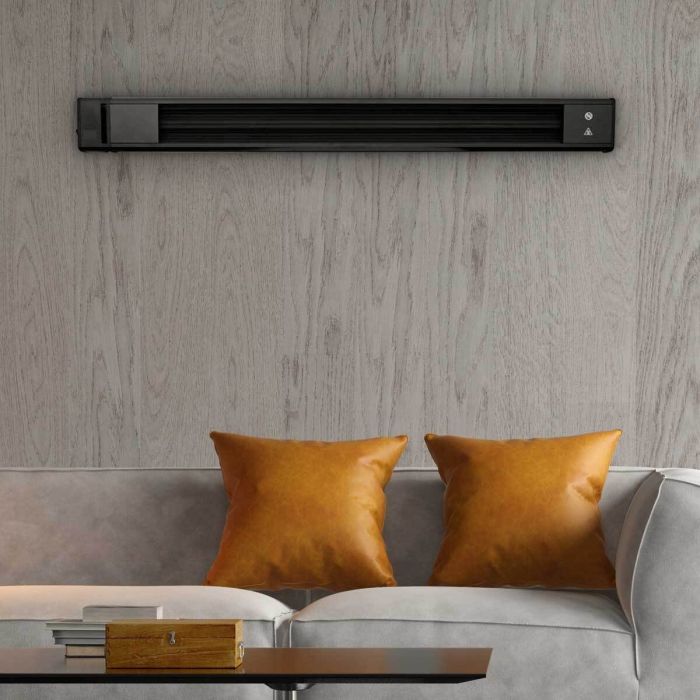Gyms and sports halls: typically large, open plan spaces, with high ceilings and various windows and doorways. Whilst the perfect space for practising your favourite sporty pastime, these factors unfortunately make them the ideal locale for heat loss. With standard sports hall ceilings coming in at a lofty 6m, making sure heat stays down where users will benefit from it – and not up in the rafters where they won’t – can be tricky with conventional convection-based heating. Luckily, infrared heaters bypass the fluctuations heating via the air can pose – and instead send lasting warmth directly where it’s needed – towards people and objects.
Why does convection-based heating not work well for sports halls?
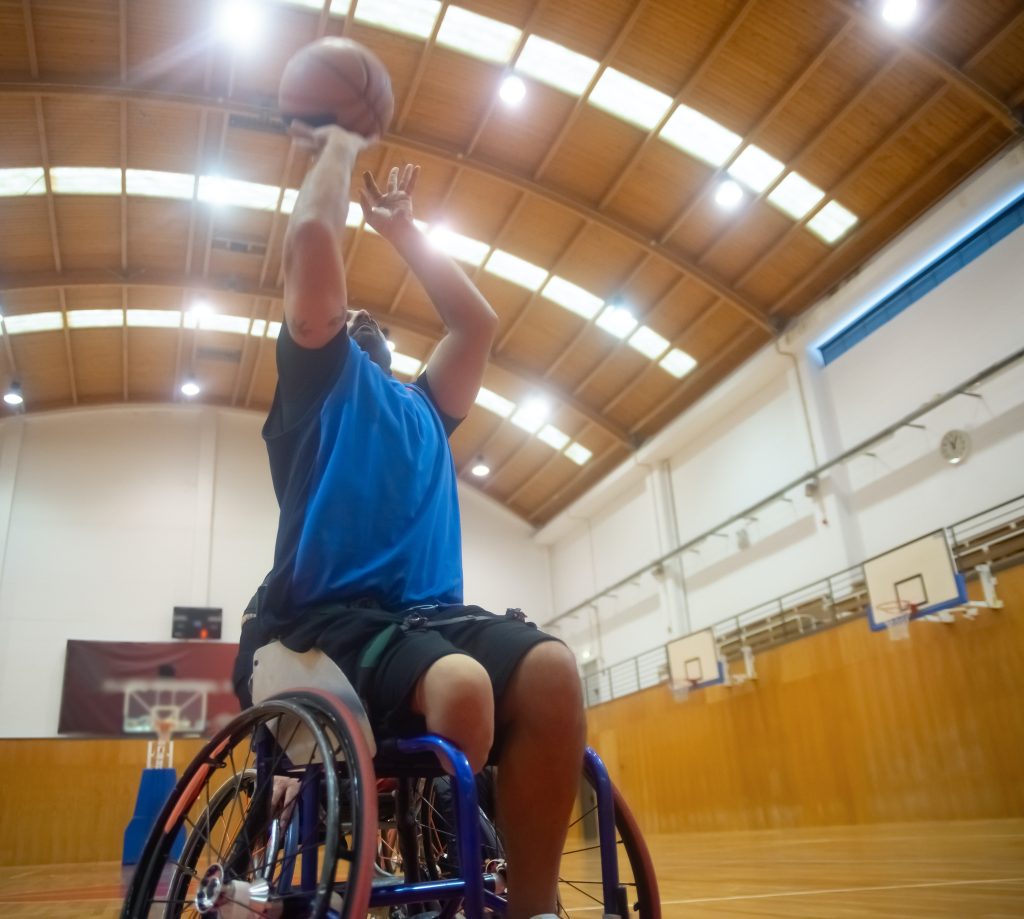
In a conventionally heated building, the air temperature is generally around 2.5°C warmer every metre above floor level. So, in a room of 6m², there could be as much as a 15°C temperature difference between ground level and ceiling level. This is an issue as convection heaters end up using a lot of energy keeping the cooler ground level air temperature at a particular level, whilst the large body of air above peoples’ heads is drastically overheated. This is not only expensive for the consumer, but it’s wasteful from an environmental perspective, as this energy ultimately goes to waste.
Convection heaters are most effective in smaller, well-insulated spaces, where the whole body of air can be heated. So, suffice to say, in an especially large, poorly insulated area like a gym or sports hall, heating its entire air volume is no mean feat!
Why is infrared much more effective?
- It does not heat the air
Let’s think about the average sports hall. With a roof height of approximately 8m, and around 690m2 of floor space, the estimated air volume would be 6,210m3. That’s a large amount of air to heat, and maintaining an even temperature throughout such a space is arguably impossible. At least, it is when working with convection.
Radiant heat, like the kind infrared panels produce, doesn’t work by heating an entire room’s air volume. It travels through the air in a space, like a wave, directly heating the people and objects in its path. This is great news for places like gyms and sports halls, as energy will be used warming those who will benefit from it, rather than the large volume of air up towards the ceiling.
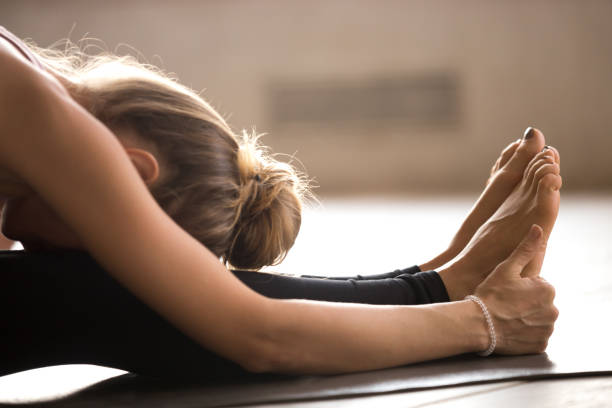
- It can help sustain muscles during exercise
Infrared heat – especially its medium and far wavelengths – is readily absorbed by our bodies. In fact, it’s the type of heat we naturally absorb and give off to maintain a consistent body temperature. This makes it great for use during exercise, as infrared heat is able to sink down into our muscles, improving flexibility and preventing muscle-related injuries. It’s why infrared heaters are often used in hot yoga studios.
- It’s a gentler form of heat
When we’re exercising, our bodies naturally get warmer as our muscles move and create energy. As such, it’s not imperative sports halls are as warm as our living rooms or bedrooms in the middle of winter – in fact, Sport England suggests an air temperature of around 16-18°C is optimal in gyms and sports facilities. As the air isn’t being directly made warmer with infrared heating, less energy is stored there – so the general ambient temperature feels comparatively cooler, despite our bodies being sufficiently warm. Convection, on the other hand, can feel somewhat stuffy and overwhelming, due to the high levels of energy in the air – not ideal when you’re already warmer than usual from exercise.
- It’s fast-acting and far-reaching
Whilst heat-up times are more gradual for their far infrared counterparts, near and medium wave infrared heaters begin heating effectively within minutes. There’s no need to preheat spaces hours before use to heat up their entire body of air – infrared heaters are much more responsive, making them great for impromptu court bookings and ad hoc gym sessions. When paired with a compatible thermostat, getting your heaters up and running when needed is even simpler.
Far infrared heat has a short frequency and a long wavelength – making it the ideal choice for larger spaces in need of expansive warmth. Our far infrared panel heaters can reach distances of up to 29m2 – making them some of the most far-reaching electric heaters on the market.
Which wavelength of infrared is best for sports halls?
| Near infrared | Medium infrared | Far infrared |
| The most instantaneous form of infrared heat. Ideal for spot heating | Still very responsive, begins warming in minutes | It is the most long-lasting out of the three – it absorbs deep into objects |
| Can be too intense when nearby the unit – not as natural feeling | The perfect blend of vigour and comfort | It is the most far-reaching option |
| It is not as far reaching as the other two types of infrared | Can travel further than near infrared heat | Ideal for concealed indoor locations, particularly open plan spaces |
| More suited to semi-exposed locations | It is the most natural form of infrared. Not overwhelmingly warm – a gentle, comforting kind of heat | |
| Doesn’t deliver instantaneous warmth, but features like adaptive start can help combat slower heat-up times | ||
| Rating: 3/5 | Rating: 4/5 | Rating: 5/5 |
Where is best to install them?
When fitting an infrared heater in a gym or sports hall, installing high up on walls or ceilings is optimal. This keeps the heater out of harm’s way, whilst still maintaining the line of sight that’s essential for effective infrared heating. Most infrared heaters are designed to be paired with an external controller – either a portable device or one that can be attached to the wall. This provides convenient and accessible management, even if your heater is installed in the upper section of your sports facility.
Gyms and sports halls: our infrared heating recommendations
Herschel Inspire Infrared Heating Panel – Mirror
Type of infrared: Far
Heats up to: 29m2
Herschel’s Inspire range of mirrored far infrared panels come in a variety of sizes and offer clever 2-in-1 functionality. Their largest model, the HIM-125, heats spaces of up to 29m2, and with its 1600mm x 600mm surface area, it is perfect for creating a studio-style mirrored wall ideal for practising yoga, dance, or gymnastics. A completely discreet heating solution, the Herschel Inspire is ideal for gyms and sports halls with a seamless aesthetic – wave goodbye to clunky radiators and unsightly pipe networks!
Crafted to an exceptional degree of quality and built to last for decades, the Herschel Inspire range is designed to be paired with a compatible controller, such as a Herschel iQ thermostat. When fitted with a thermostat capable of at least a weekly programming schedule and open window detection, the Herschel Inspire is an EcoDesign compliant Lot 20 heater.
Ecostrad Thermostrip Infrared Heaters
Type of infrared: Far
Heats up to: 24m2
Ecostrad’s Thermostrip Infrared Heaters are designed to gently heat large open plan spaces, making them the perfect choice for lofty gyms and sports halls. With a slimline and minimalist appearance, the Thermostrip blends in with any interior design scheme, for a seamless result in both aesthetics and functionality.
Mountable on walls or awnings, when hardwired into the mains electrics of a property, the Thermostrip has a completely wireless finish. The most powerful model in the range, the EcoStrip32, has an output of 3200 watts, making it suitable for heating areas of up to 24m2. Compatible with a range of external controllers, management from afar is simple.
Game, set, and match to infrared heating
With traditional convection-based heating, gyms and sports halls are liable to a high level of heat loss, due to their high ceilings and the natural way heat rises. Fortunately, infrared heating works differently. By bypassing the air and heating people and objects in a direct line, there’s no middleman.
If you’re considering infrared heating for your gym or sports hall, especially if the space is large and may require multiple units, feel free to get in touch with our friendly sales team who will be happy to provide personalised advice and recommendations for your particular space.


